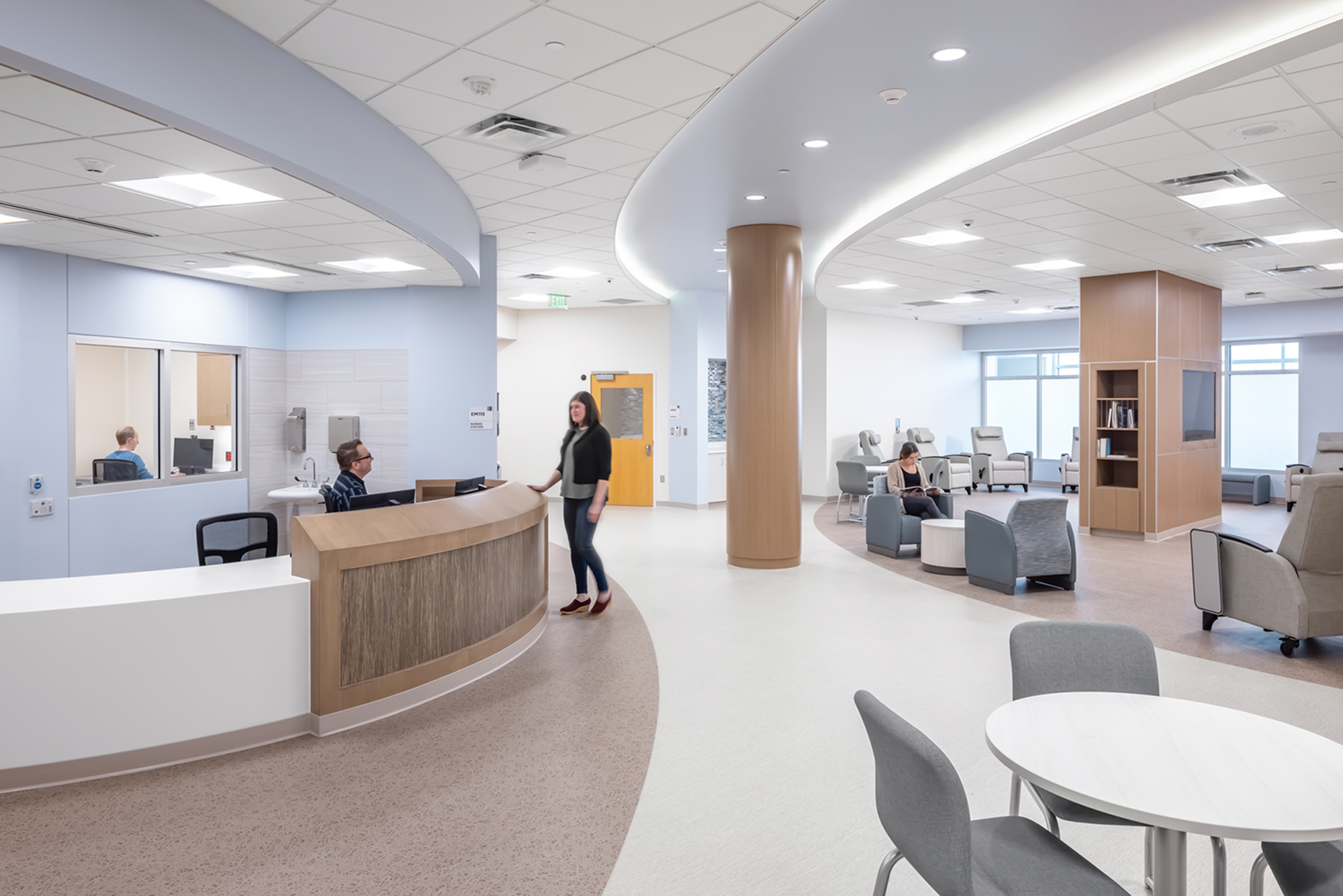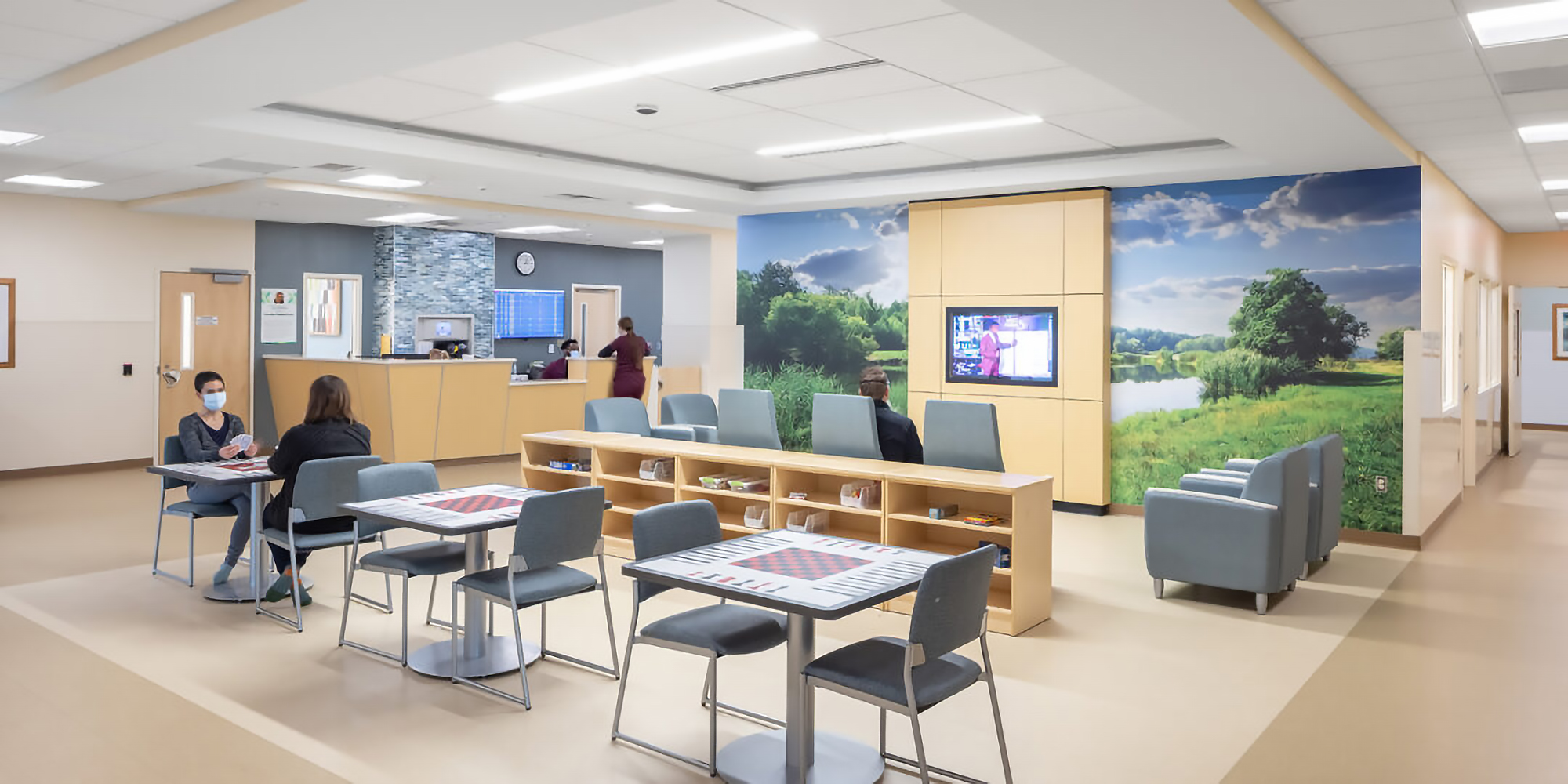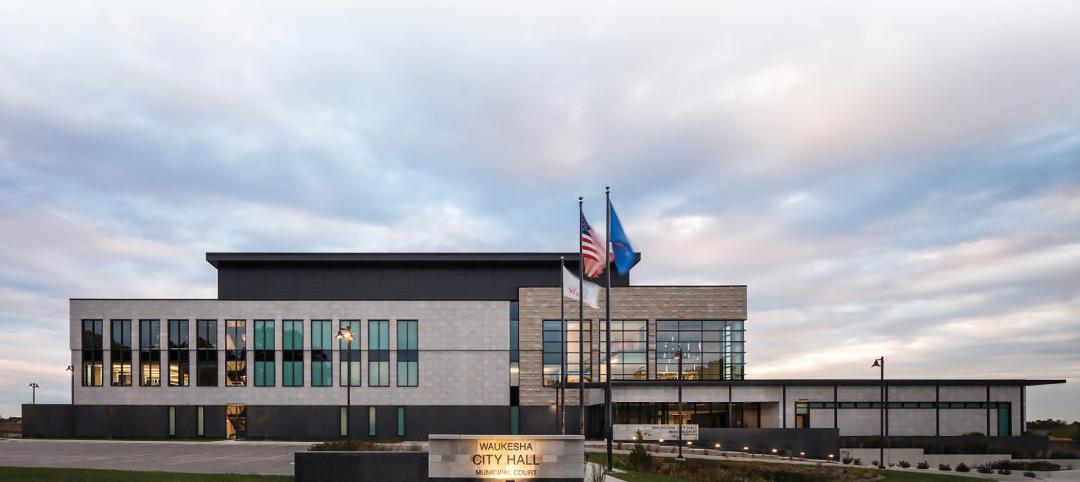The United States is in the midst of a mental health crisis. According to the National Institute of Mental Health, one in five adults in the United States experiences mental illness each year. And yet, only about half of those who need treatment actually receive it. For this episode of Side of Design, host and BWBR principal Melanie Baumhover sat down with a roundtable of the firm’s behavioral and mental health designers, Medical Planner Devan Swiontkwoski, Senior Interior Designer Jessica Norton, and Senior Project Architect Ellen Konerza to talk about how intentional design can play a role in combatting the crisis.
First, some context: Lack of access to care is particularly acute in rural areas, as Devan points out. In many rural communities, there are not enough—if any—mental health professionals available, and those who are available are often overworked and underpaid. As a result, people in rural areas are more likely than urban residents to experience a serious mental illness, according to Rural Health Information Hub, and less likely to get the help they need. Melanie adds that an estimated one in eight patients showing up in an emergency department is facing a mental health-related need, and that number is increasing.
The Importance of Intentional Design
Environment can have a profound impact on people’s mental health—that’s why intentional design is so important in mental health care. When designing a mental health care facility, it is important to consider the needs of the patients and the staff. The environment should be calming and therapeutic, and it should promote healing and recovery. Given the current staffing shortage, it’s also critical to maximize the resources that staff have in order to treat patients as efficiently as possible. Plus, there may need to be accommodations for telehealth capabilities, which demand flexible spaces.
Melanie illustrates the high stakes of intentional design: “If you’re not intentional about your design decisions and you’re just focusing on ligature resistance, which is what regulatory bodies are mostly looking for, you could end up with a space that’s very stark and very prison-like,” she says. “When you have a patient in crisis, and you’re putting them in a space that makes them feel like they’re being punished, it is not at all helpful to their healing and their mindset.”
Human-Centered Safety
The team at BWBR has an approach we call Human-Centered Safety that is an integral part of our behavioral health projects. As Devan says, BWBR truly believes in innovative design that helps prevent mental health concerns from escalating during care and helps create a pro-social, therapeutic space.
Melanie points out that studies have shown there are two ways people react when they feel they lack control in their environment—deflated or agitated. When patients feel they are limited by their environment, they may feel they don’t have the ability to make a change in their wellness. This can make some patients feel hopeless and others distressed.
By creating an environment that promotes safety and flexibility, putting appropriate levels of control back into the patient’s hands, mental health care facilities can help foster healing and recovery. Intentional design can make a real difference in the lives of people in treatment for mental illness and encourage positive outcomes after discharge. “BWBR is really great about including spaces that promote patient autonomy,” says Jessica.
There are a number of things that can be done to create a therapeutic environment in a mental health care facility. “We’re really looking to make sure we’re creating spaces that are inviting and liberating, dignified and therapeutic,” says Devan. “We believe we need to create the appropriate space for these patients to truly be able to heal.” Jessica explains that a facility might be specifically designed to be well-lit and airy, with plenty of natural light. It might be painted in calming colors with nature-inspired imagery, and the furniture could be selected to be comfortable and inviting. The facility might prioritize private spaces, or it might be advantageous to offer more open, dynamic space. Sensory elements are critical considerations, as are elements that help patients feel as though they have some agency and choice in their care—something that is often lacking in mental health care.
Again, staff needs are also important considerations when designing spaces for behavioral health. Their safety and mobility is paramount, and that’s why it’s critical to create multiple points of entry and exit within the space and the nurse’s stations, says Ellen.
Enter: The EmPATH Model
The BWBR team has first-hand experience with one of the most important recent evolutions in mental health care, which is the emergence of EmPATH. The EmPATH model helps divert patients from the emergency department and into dedicated units that better serve their needs by helping them de-escalate and address their specific challenges with appropriate care. As Devan explains, the design team sees the model as an opportunity to integrate care into rural hospitals without designated facilities for behavioral and mental health.

Loud noises, ligature points, loose medical equipment, and minimal amounts of daylight can make the emergency department unsuitable for patients in distress, says Ellen. The hope, she says, is that as the EmPATH model expands, patients experiencing mental health crises will have access to appropriate treatment outside of standard emergency units.
Of course, for the EmPATH model to be successful, it must be thoughtfully designed. It requires specific design features that are distinct from those that might be in an emergency department. The flow, lighting, amenities, and furnishings are all designed to keep both patients and staff safe, and to create a calming environment.
Tailored To Fit
The BWBR team emphasizes the importance of bespoke design that addresses the unique needs of a given facility, staff, and patient population. Even within a model like EmPATH, there is significant nuance that necessitates a consultative approach.
For example, Jessica points out the need to account for varying ages within an adolescent unit, where patients’ ages could range anywhere from five to 17 years old. Furniture selection, design aesthetics, and division of space must account for these differing age-based needs, she says. Space availability and cost are other considerations that need to be navigated on a per-project basis, which is why the BWBR team members are professional problem-solvers as much as they are designers.
Of course, design is only one part of the solution for the current mental health crisis. Still, the BWBR team is honored and inspired by the opportunity to do everything we can to make a real difference in people’s journeys to recovery.
More from Author
BWBR | Oct 9, 2024
How healthcare operations inform design
Amanda Fisher, Communications Specialist, shares how BWBR's personalized approach and specialized experience can make a meaningful impact to healthcare facilities.
BWBR | Sep 9, 2024
Exploring the cutting edge of neuroscience facility design
BWBR Communications Specialist Amanda Fisher shares the unique considerations and challenges of designing neuroscience facilities.
BWBR | Jun 20, 2024
How student housing developments are evolving to meet new expectations
The days of uninspired dorm rooms with little more than a bed and a communal bathroom down the hall are long gone. Students increasingly seek inclusive design, communities to enhance learning and living, and a focus on wellness that encompasses everything from meditation spaces to mental health resources.
BWBR | May 23, 2024
The unique design needs of Critical Access Hospitals
BWBR healthcare principals Brad Krump, AIA, and Scott Kirchner, AIA, discuss their industry experience and passion for supporting the role that critical access hospitals play in their communities.
BWBR | Mar 8, 2024
Conference room design for the hybrid era
Sam Griesgraber, Senior Interior Designer, BWBR, shares considerations for conference room design in the era of hybrid work.
BWBR | Jan 30, 2024
The practical magic of the design process
Designers bridge very different worlds, and there can be an air of mystery about the process and the various roles within it. We invited some of the BWBR team to clear things up.
BWBR | May 24, 2023
The future of work: What to expect in 2023
While no one disagrees that the workplace has undergone tectonic changes, it is less clear how to understand these shifts and synthesize them into practical action for the coming year.
BWBR | Apr 13, 2023
Urgent care facilities: Intentional design for mental and behavioral healthcare
The emergency department (ED) is the de-facto front door for behavior health crises, and yet these departments are understaffed, overwhelmed, and ill-equipped to navigate the layered complexities of highly demanding physical and behavioral health needs.
BWBR | Apr 6, 2023
Design for belonging: An introduction to inclusive design
The foundation of modern, formalized inclusive design can be traced back to the Americans with Disabilities Act (ADA) in 1990. The movement has developed beyond the simple rules outlined by ADA regulations resulting in features like mothers’ rooms, prayer rooms, and inclusive restrooms.















